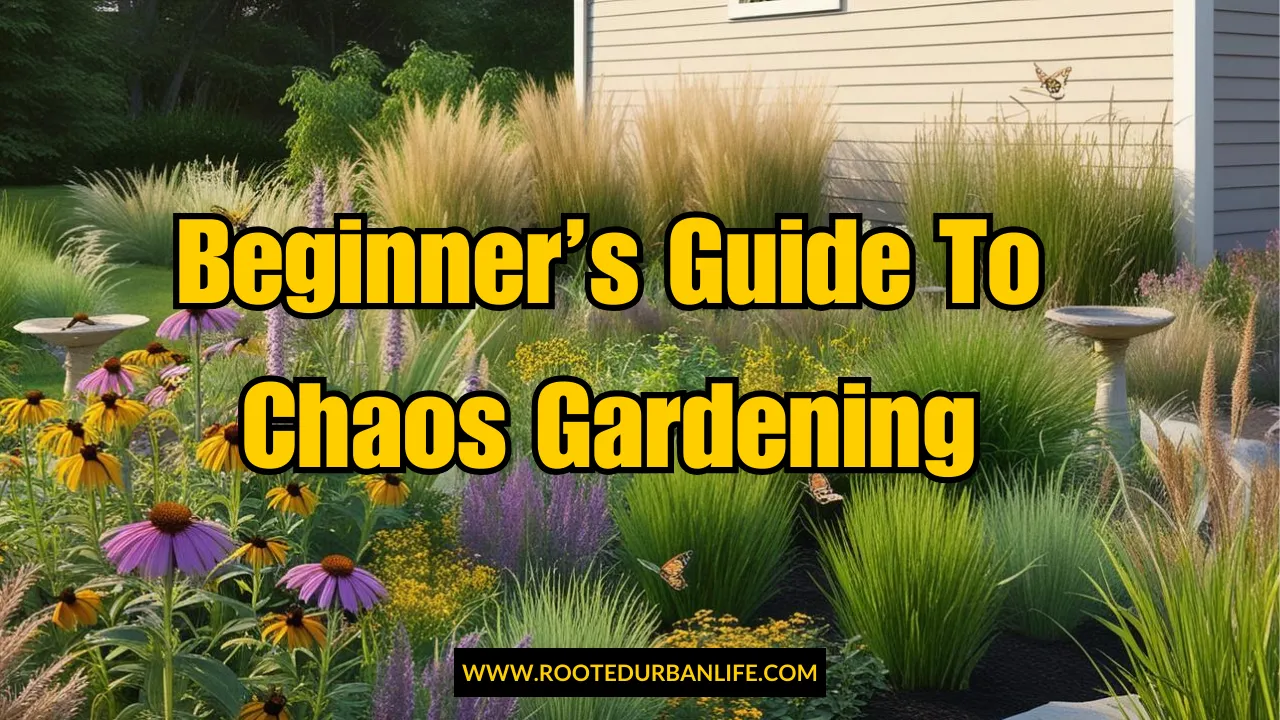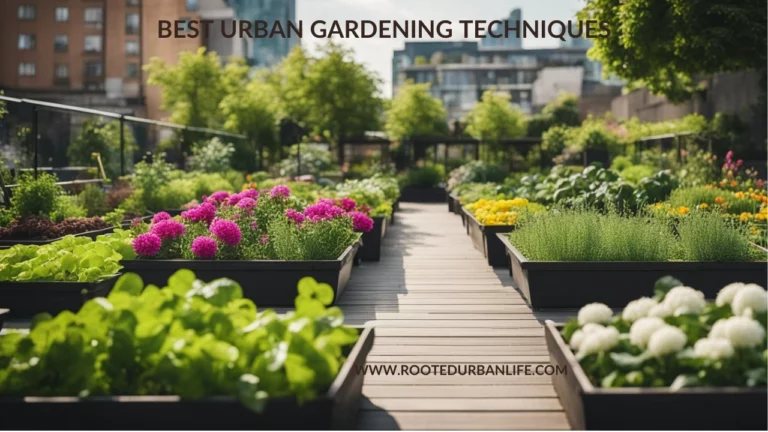Beginner’s Guide To Chaos Gardening
Chaos gardening offers a refreshing approach to growing plants with minimal effort. Instead of strict rules and rigid layouts, this style promotes a natural, free-flowing design that encourages creativity. By embracing randomness and allowing nature to take its course, you can create a low-maintenance garden that thrives with less stress.
Read more: Beginner’s Guide To Chaos GardeningYou might wonder how to start chaos gardening. It’s simple! Toss seeds around, let plants grow where they want, and watch your garden come to life in unexpected ways. This method not only saves time but also invites a diverse range of plants to coexist, creating a unique and vibrant space.
If you’re looking for a way to enjoy gardening without the pressure of perfection, chaos gardening might be the answer. You can connect with nature in a relaxed way while still cultivating a beautiful, lively garden. Dive into this exciting method and discover how easy it can be to grow your own slice of paradise.
| Chaos gardening offers a natural approach to growing food and creating vibrant gardens. Instead of following rigid planting rules, you’ll learn to work with nature’s own patterns. This guide shows you how to start your chaos garden, from selecting the right location to choosing plants that work together naturally. Whether you have a small backyard or larger space, you’ll discover how letting go of traditional gardening rules can lead to a thriving, low-maintenance garden that also supports local biodiversity. |
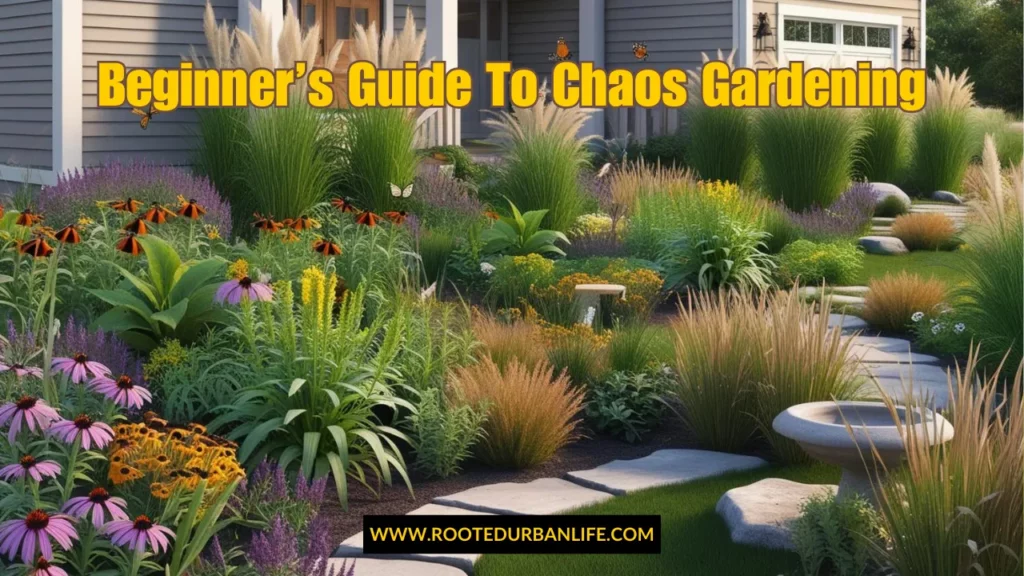
Understanding Chaos Gardening
Chaos gardening is a unique approach that emphasizes planting without strict rules. You focus on creating a vibrant garden that mimics nature. This method boosts biodiversity and supports a variety of life forms in your garden.
Defining Chaos Gardening
Chaos gardening allows you to plant in a free and unstructured way. You can mix different types of plants, flowers, and vegetables together. Instead of neat rows, plants grow together, creating a natural landscape.
This technique values natural diversity. It encourages the growth of various species, which helps create a balanced ecosystem. By doing this, you attract beneficial insects and pollinators. These creatures play a vital role in plant health and crop production.
Benefits of Chaos Gardening
There are many benefits to chaos gardening. First, it promotes biodiversity. A diverse garden is more resilient. Different plants can support each other and attract more wildlife.
Second, healthy soil is a key outcome. Mixing plants can improve soil structure and nutrients. This leads to healthier roots and better plant growth.
Third, a chaos garden often requires less maintenance. Nature does much of the work. With fewer chemicals, your garden can thrive naturally, creating a lush space for you to enjoy.
Get Started with Your Chaos Garden
Starting a chaos garden can be a fun and exciting project. You have the freedom to choose where to plant and what seeds to use. Here are some key points to think about as you begin your chaos gardening journey.
Choose Your Spot Wisely
Pick a spot in your yard that gets a good amount of sunlight, usually 6 to 8 hours a day. Make sure the area drains well to avoid water buildup, which can harm your plants. You can use raised beds or direct soil for planting.
Take a look at your space. Is there room for a mix of plants? Imagine a patch where flowers, herbs, and vegetables can grow together. If you’re limited on yard space, pots filled with good potting soil can work great too. Choose a location that’s easy for you to access for watering and harvesting.
Seed Selection Mix For Biodiversity
Choosing seeds is one of the best parts of chaos gardening. You can use fresh seed packets or even leftover seeds from last year. A mix of flowers and vegetables creates a beautiful, productive garden.
Look for seeds that are suited for your climate. You might try mixing fast-growing plants with slower ones. This creates layers in your garden. It’s okay to plant seeds that you find in your kitchen, like beans or tomatoes, to add surprises. Just remember to check for germination rates if you use older seeds. Have fun mixing and matching your favorites!
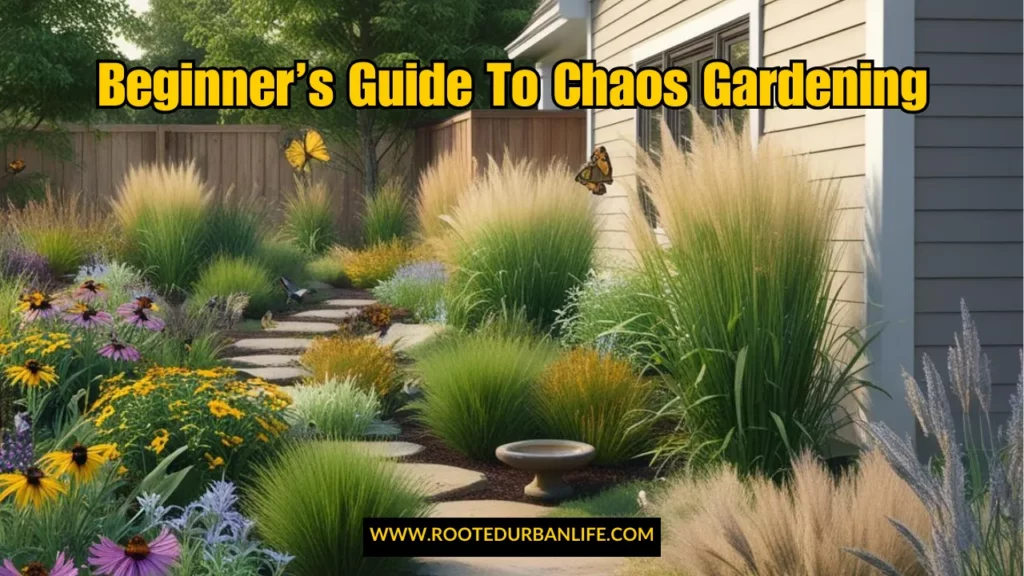
Cultivate Your Garden
Creating your chaos garden involves embracing a mix of unpredictability and natural beauty. With the right approaches to soil preparation, planting, and maintenance, you can enjoy a low-maintenance garden that thrives with minimal effort.
Soil Preparation and Health
Good soil is the foundation of a successful chaos garden. Start with a mix of compost and potting mix to enhance soil health. This combination improves drainage and provides essential nutrients.
Before planting, test your soil to check its pH and nutrient levels. You can add organic matter to boost soil fertility. Healthy soil promotes better germination rates and supports diverse plant growth.
Every few months, turn your soil to aerate it and mix in more compost. This helps keep your garden thriving and allows for beneficial microbes to flourish.
Planting – An Organic Process
When planting, consider using a seed mix that combines various flowers and vegetables. This adds visual interest and encourages a natural balance against pests.
Space your seeds based on their needs, but don’t worry too much about perfect arrangement. Randomness can promote a more organic look. Remember to sprinkle seeds at different depths for varied growth patterns.
After planting, label your areas. This helps you track what’s growing and when to expect blooms or harvest.
Minimal Maintenance
Maintaining your chaos garden requires minimal work. Water your plants based on their individual needs and the weather. Use a moisture meter if you’re unsure.
Pest control can be achieved by attracting beneficial insects like ladybugs. You might plant flowers nearby that lure them in.
Fertilizing should be light and done about once a month. Using organic fertilizers can nourish plants without overwhelming them. Less is often more in a chaos garden, so listen to your plants and adapt as they grow.
Enhancing your Garden’s Ecosystem
Creating a thriving garden ecosystem can boost biodiversity and improve plant health. You can support this by attracting helpful insects and using native plants. Both strategies work well together in chaos gardening.
Encouraging Pollinators and Beneficial Insects
To attract pollinators like bees and butterflies, plant a variety of flowers that bloom at different times. Choose flowers with simple shapes that allow easy access for insects. Sunflowers, lavender, and coneflowers are great choices.
Adding plants that provide habitat is also essential. Leave some areas of your garden wild, with tall grass and native weeds. This creates a refuge for beneficial insects such as ladybugs and lacewings.
Consider companion planting, where you place certain plants next to each other to attract good insects. For example, planting marigolds near vegetables can help deter pests while inviting beneficial insects.
Utilizing Native Plants
Native plants are adapted to your local environment. They require less water and maintenance, making them ideal for chaos gardening. These plants also create a home for local wildlife.
Choose a mix of grasses, shrubs, and flowers to enhance your garden’s natural diversity. Native flowers like black-eyed Susans and bee balm not only look beautiful but also support local pollinators.
Using native plants helps improve soil health. Their deep roots can prevent erosion and promote better water retention. Additionally, they can attract insects that will aid in pest control.
Incorporating these varieties into your garden will create a more balanced ecosystem. Plus, they will thrive in your local climate, ensuring a successful and sustainable garden environment.
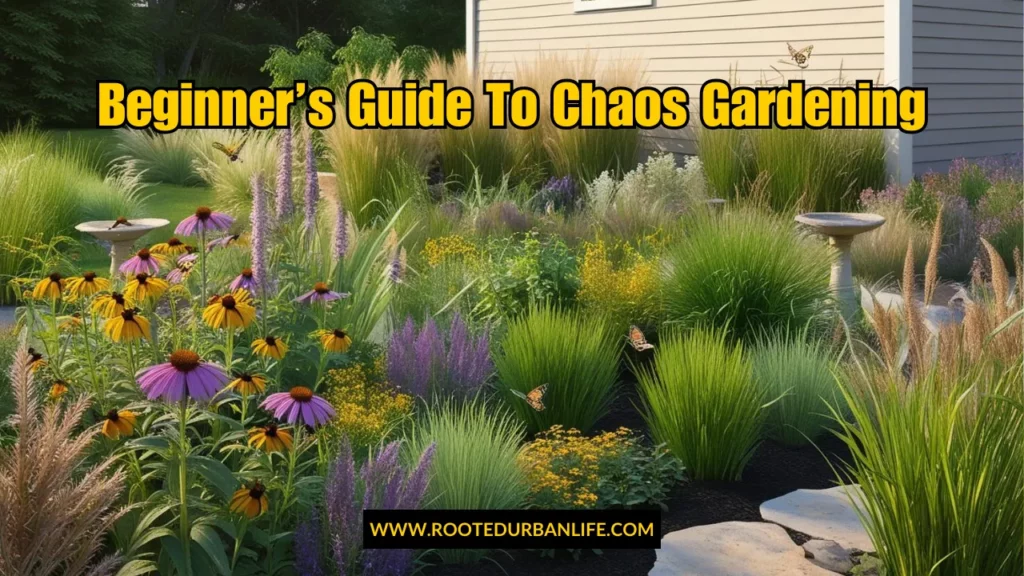
Frequently Asked Questions
You might have questions about chaos gardening and how to make it work for you. Here are some answers to help you get started and understand this fun approach to planting.
What plants thrive best in a chaos garden environment?
In a chaos garden, native plants usually do well. They’re adapted to the local climate and soil. You can also choose hardy plants like sunflowers, daisies, and certain herbs. These plants can handle less maintenance and enjoy growing together.
How do you start a garden using the chaos gardening method?
To start, pick a spot in your yard that gets good sunlight. Clear the area of weeds, but don’t worry about perfect soil. Just scatter seeds randomly and let nature take its course. You can also add compost for nutrients, but it’s not necessary.
Can you mix wildflowers and vegetables in a chaos garden?
Absolutely! Mixing wildflowers and vegetables can be beneficial. Wildflowers attract pollinators, helping vegetables grow better. Just make sure to space them out so that the veggies get enough room to flourish.
What are some tips for maintaining a chaos garden?
Keep an eye on your garden to see what’s growing well. You can water during dry spells but let nature handle most of it. If you see any weeds, pull them out, but don’t overthink it. Trust the process and enjoy the beauty of nature taking charge.
How does chaos gardening impact biodiversity?
Chaos gardening can help promote biodiversity. Different plants support various insects and wildlife. The mix can create a healthier ecosystem and encourage more species to thrive. This makes your garden more lively and vibrant.
What are the key differences between chaos gardening and traditional gardening techniques?
Chaos gardening focuses on minimal intervention and letting plants grow naturally. Traditional gardening often involves strict planting plans and regular maintenance. With chaos gardening, you embrace unpredictability and diversity, while traditional methods may favor neatness and order.
Key Takeaways
| Start small and observe what works in your space. Focus on native plants and hardy varieties. Mix edibles with flowers for natural pest control. Water deeply but infrequently to encourage strong roots. Let some plants self-seed for next season. Embrace imperfection – nature isn’t meant to grow in straight lines. Keep a simple garden journal to track what works best |
Chaos gardening offers a refreshing approach to cultivating your green space, allowing nature to flourish in its own beautiful, unstructured way.
By embracing this method, you can create a vibrant garden that not only thrives but also reduces the stress associated with traditional gardening practices.
So why not take the plunge? Grab your seeds, let go of the rigid rules, and start your chaos garden today. Share your journey with us in the comments below or follow our blog for more tips and inspiration on embracing the wild side of gardening.


